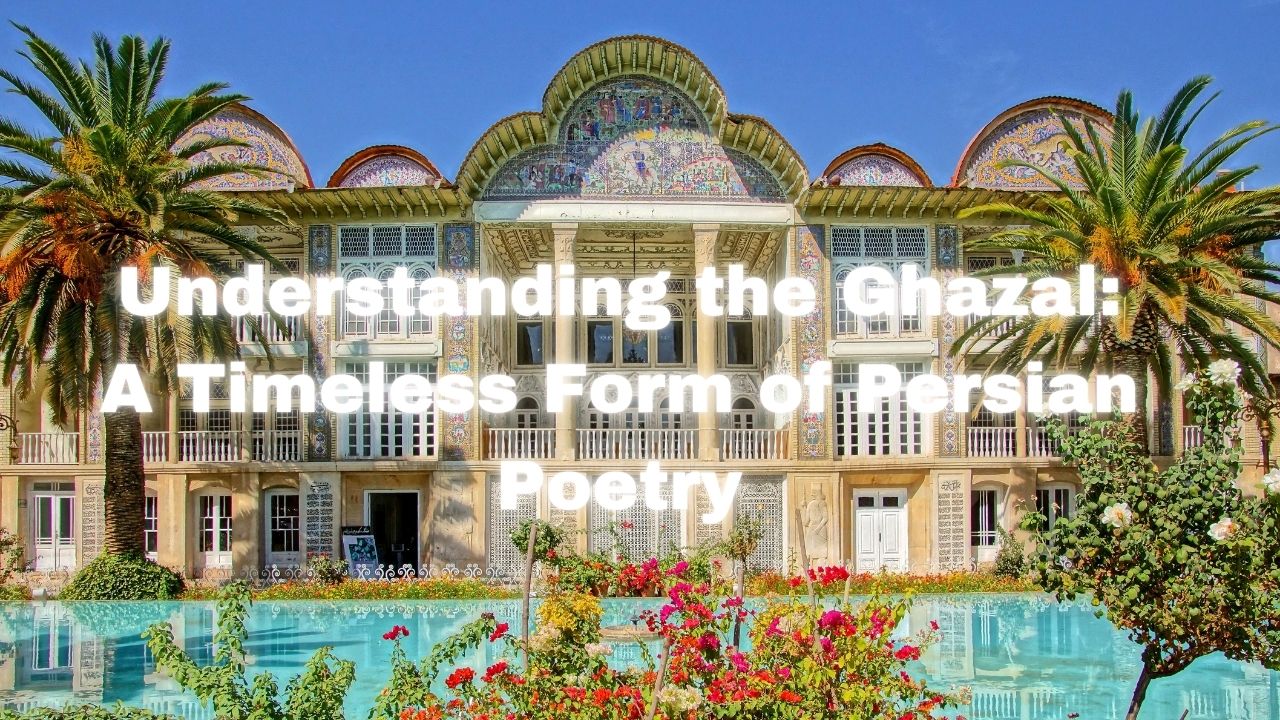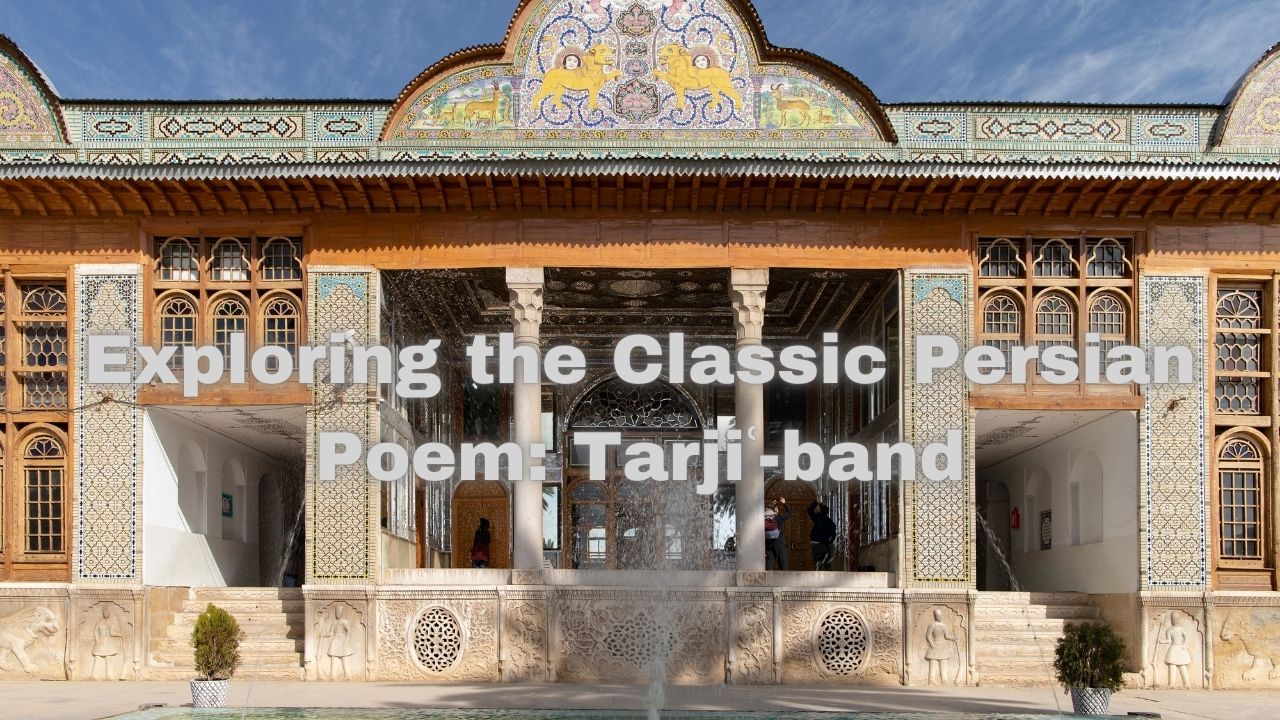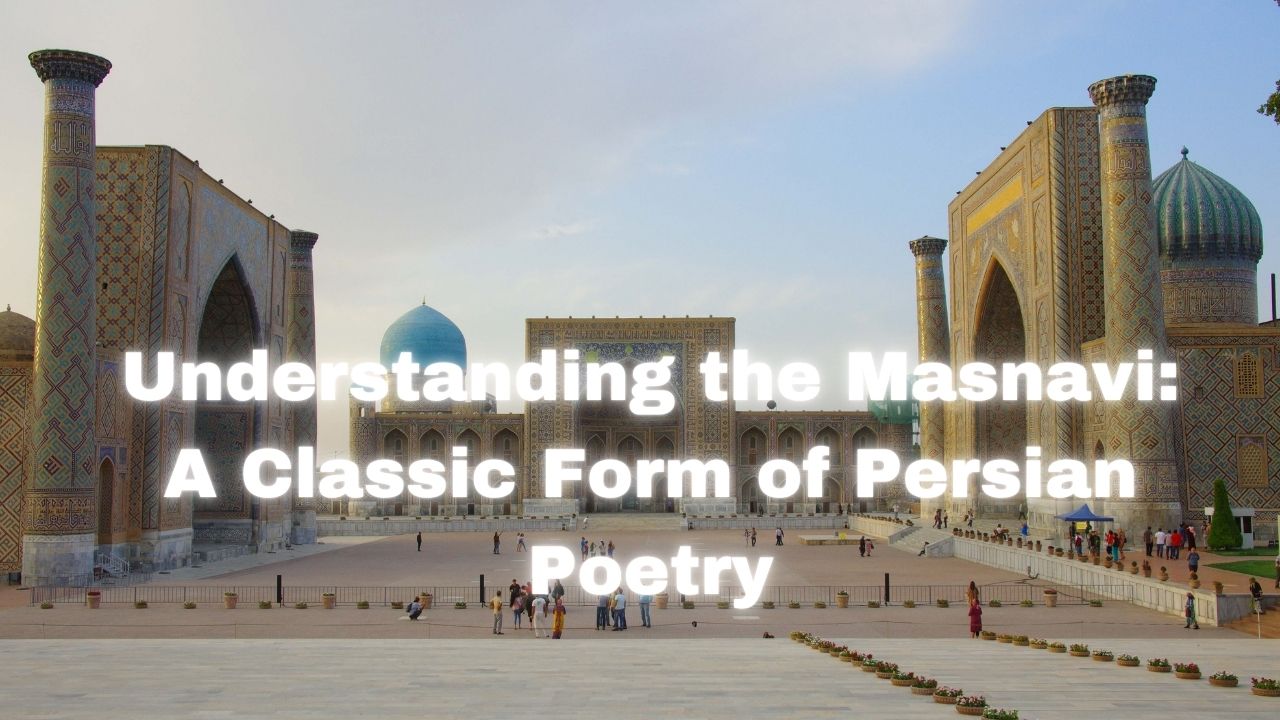Exploring the Structure, Themes, and Enduring Appeal of the Persian Ghazal
The ghazal is one of the most beloved and enduring forms of Persian poetry. Known for its lyrical beauty and profound themes, the ghazal has transcended its origins in Persia to influence poets and writers worldwide. This classic form of poetry, with its intricate rhyme scheme and emotional depth, has long been used to express love, mysticism, and the complexities of the human experience. From the verses of Rumi and Hafez to the modern ghazals of poets like Ghalib and even in contemporary poetry, the ghazal continues to resonate with readers.
In this blog post, we will explore what makes the ghazal such a cherished form of Persian poetry, how it is structured, and why it remains timeless.
What is a Ghazal?
The ghazal (غزل) is a poetic form consisting of rhyming couplets and a refrain, with each line sharing the same meter. Typically, a ghazal has 5 to 15 couplets, and while each couplet (called a sher) can stand independently as a self-contained thought or image, the poem as a whole tends to revolve around a central theme or emotion.
The themes of the ghazal are often deeply emotional and personal, with a focus on love—both earthly and divine—and longing. In classical Persian literature, ghazals were often imbued with spiritual and mystical undertones, reflecting the influence of Sufism, a form of Islamic mysticism that emphasizes a personal relationship with the divine.
Structure of a Ghazal
The ghazal has a distinct and complex structure that sets it apart from other forms of poetry. Its defining characteristics include:
-
Couplets (Sher): Each stanza of a ghazal is made up of two lines (a couplet), with each couplet expressing a complete and independent thought. While the couplets are related through their theme, they do not necessarily follow a linear narrative.
-
Rhyme and Refrain: The rhyme scheme of a ghazal is unique. In the first couplet, both lines must end with the same rhyme followed by a refrain (a repeating word or phrase). In each subsequent couplet, only the second line must rhyme with the first couplet’s rhyme and refrain. The rhyme-refrain structure is what gives the ghazal its musical and rhythmic quality.
Example:
In a ghazal, a rhyme (called qaafiya) and a refrain (called radif) might look like this:
-
First couplet:
"The world is but a fleeting dream, a cruel disguise,
I seek the truth, but find it in your radiant eyes." (radif: "eyes") -
Subsequent couplet:
"In every whispered word, the soul of silence lies,
The answer to my deepest prayer is in your eyes." (radif: "eyes")
-
-
Meter: The ghazal adheres to a specific meter throughout the poem, which adds to its musicality. Although the exact meters vary, the rhythm is carefully maintained across all couplets, creating a sense of harmony.
-
Signature Verse (Maqtaʿ): Traditionally, in the final couplet, the poet often includes their own name or pen name (takhallus), adding a personal touch to the poem. This is known as the maqtaʿ. For example, Hafez frequently included his name in the closing lines of his ghazals as a way to reflect on his experiences or to emphasize the theme of the poem.
Themes in Ghazal Poetry
The ghazal is celebrated for its ability to convey complex emotions and explore deep philosophical ideas. Over time, certain themes have come to define this form of poetry:
-
Love and Longing: Love is the most dominant theme in ghazal poetry, whether it is romantic love between two people or spiritual love for the divine. The pain of separation, the joy of union, and the yearning for the beloved are frequent motifs.
-
Mysticism and Sufism: In Persian literature, the ghazal is often associated with Sufi poetry, where the "beloved" is a metaphor for God, and the longing expressed in the verses represents the soul’s desire to unite with the divine. Poets like Rumi and Hafez used the ghazal to express their spiritual journeys, illustrating the path of the seeker towards enlightenment and divine love.
-
Beauty and Transience: Many ghazals contemplate the fleeting nature of life, beauty, and the world. The impermanence of existence is a key theme, with the poet reflecting on the passing of time and the inevitability of loss.
-
Wine and Ecstasy: In Sufi tradition, wine often serves as a metaphor for spiritual ecstasy. The intoxication that comes from wine is likened to the overwhelming joy experienced in divine presence. Although wine appears frequently in ghazal poetry, its symbolic meaning goes beyond physical indulgence to suggest a deeper, spiritual intoxication.
-
Philosophical Reflections: The ghazal also serves as a platform for philosophical musings. Poets ponder the nature of existence, the soul, and the meaning of life, often through a lens of mysticism or introspection.
The Appeal and Influence of the Ghazal
The ghazal's intricate rhyme scheme and emotional depth have made it a popular form of poetry, not only in Persia but also in many other parts of the world. Its influence can be seen in Arabic, Urdu, Turkish, and even modern English poetry.
Persian Poets like Hafez, Saadi, and Rumi are some of the most celebrated ghazal poets, known for their ability to seamlessly blend the personal with the spiritual. Hafez, in particular, is famous for his ghazals that explore love, divinity, and the pleasures of life with equal eloquence. His work has been translated into numerous languages and continues to inspire readers across the globe.
The ghazal also found a home in Urdu poetry, where poets like Mirza Ghalib brought the form to new heights of sophistication. Ghalib's ghazals are known for their wit, melancholy, and philosophical insights, capturing the struggles of the human condition.
In modern times, the ghazal has crossed linguistic boundaries, inspiring poets in the West, including Adrienne Rich and Agha Shahid Ali, who adopted the ghazal form into English literature while staying true to its original structure and themes.
Why the Ghazal Endures
The ghazal endures because it speaks to universal human emotions—love, longing, sorrow, and the search for meaning. Its strict form gives structure to these emotions, while the freedom within each couplet allows for creativity and depth. The balance between the fixed rhyme scheme and the independent couplets mirrors the balance of chaos and order in life itself.
The ghazal’s emphasis on repetition, with its rhyming refrain, creates a hypnotic effect, pulling the reader or listener into the emotional core of the poem. Whether reflecting on the nature of love or the mysteries of the divine, the ghazal provides a space for both poet and reader to explore the complexities of the heart.
Conclusion: The Ghazal’s Timeless Beauty
The ghazal has remained a cornerstone of Persian poetry for centuries, offering poets a structured yet flexible way to express the profound emotions and philosophical insights that define human life. Its influence has spread far beyond its Persian origins, touching poets in languages and cultures across the world.
For readers and writers alike, the ghazal offers a timeless form that beautifully captures the essence of love, loss, and the eternal search for truth. Whether you are new to Persian poetry or a seasoned admirer, the ghazal provides a rich and rewarding experience that continues to inspire and move us today.
If you haven’t yet read the ghazals of poets like Hafez or Ghalib, now is the perfect time to dive in and experience the beauty of this classic Persian form.





